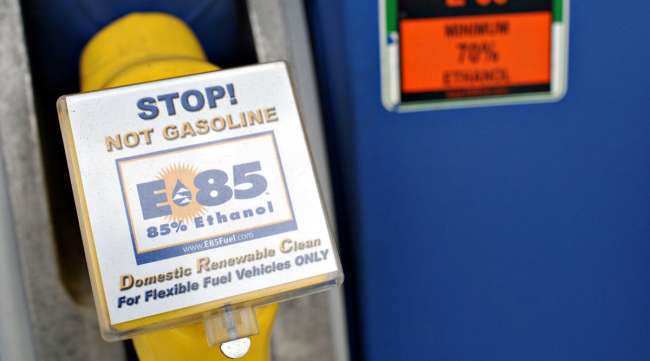Oil Industry Poised to Attack as EPA Boosts Ethanol in Fuels

Oil industry foes are preparing to go to court to fight the Environmental Protection Agency regulation issued May 31 that allows year-round sales of higher-ethanol E15 gasoline nationwide.
The agency’s final rule offers ethanol producers and corn farmers the promise of greater market access and demand — but the coming legal battle will be the true test of that potential.
The regulation fulfills President Donald Trump’s promise to unleash ethanol sales and is a potent show of support to Midwestern farmers who are suffering from Chinese tariffs on soybeans, flooding that destroyed stockpiled grain and a deluge of rain that has delayed plantings. With some 37% of America’s corn production going to ethanol mills, any regulatory move lifting demand for the fuel could buttress farmers who helped propel Trump to the White House.
Iowa Republican leaders and biofuel industry boosters will celebrate the shift with EPA’s Region 7 administrator, during an event at Elite Octane’s dry mill ethanol plant in Atlantic, Iowa, later May 31.
The EPA rule waives E15 gasoline containing 15% ethanol from vapor pressure requirements that have blocked sales from June 1 to Sept. 15 in areas where smog is a problem, said Bill Wehrum, assistant administrator for the EPA Office of Air and Radiation. That should cause “a bump” in sales at the estimated 1,000 filling stations that already offer E15 today, while encouraging more of them to offer it, Wehrum told reporters on a conference call.
"It's good news that we're going to have #E15yearround. Ethanol is good for agriculture, good paying jobs in rural America, good for the environment, and good for our national security."
Well said, Senator @ChuckGrassley! Thank you for being an incredible champion for #biofuels. pic.twitter.com/2XFzzw66qT — Growth Energy (@GrowthEnergy) May 31, 2019
“Over time, this is going to result in a substantial increase in the amount of E15 sold” and will allow more renewable fuel to be blended into the fuel supply, Wehrum said.
At Trump’s direction, EPA bundled the E15 shift with modest changes meant to boost transparency and prevent price manipulation in the trading of credits used by refiners to prove compliance with annual biofuel blending quotas. Large integrated oil companies, including ExxonMobil Corp., BP America Inc. and Chevron Corp., had argued against EPA’s initial proposal of more aggressive trading limitations.
Wehrum said the agency would continue examining allegations of market manipulation and respond to them if needed.
“We’re applying the theory of first do no harm,” he said. While the agency takes the issue seriously,Wehrum said, EPA has not yet found clear evidence of significant manipulation.

President Donald Trump (Andrew Harrer/Bloomberg News)
Ethanol is already a staple of America’s fuel supply, accounting for about 10% of total consumption. Biofuel boosters who have lobbied for the regulatory shift are betting 15% will eventually emerge as the standard. Green Plains Inc. CEO Todd Becker said this month that the higher blend puts in play “year-round demand growth of at least 200 million gallons of annualized incremental demand as only the starting point.”
That would come at the expense of the oil industry.
“This action by EPA makes no sense and is contrary to the law, congressional intent and decades of agency precedence,” said Frank Macchiarola, a group director at the American Petroleum Institute. “We will challenge it vigorously.”
API previewed its legal argument in public comments, arguing that the agency is flouting the plain text of the Clean Air Act by extending an existing waiver to E15. Marathon Petroleum Corp. warned EPA’s move to consider E15 “substantially similar” to conventional E10 gasoline is “arbitrary and capricious” — a fatal failing under a federal law governing rulemaking. And the American Fuel and Petrochemical Manufacturers insisted EPA is taking action previously rejected by Congress.
Ethanol advocates argue EPA is on solid legal footing. The agency’s move to grant a waiver to E15 “reflects the best, most natural reading” of the Clean Air Act, and that higher-ethanol blend is substantially similar to E10, said Growth Energy CEO Emily Skor.




